Opinion & Analysis
A Study That Changed the Way Golfers Think About Wedges
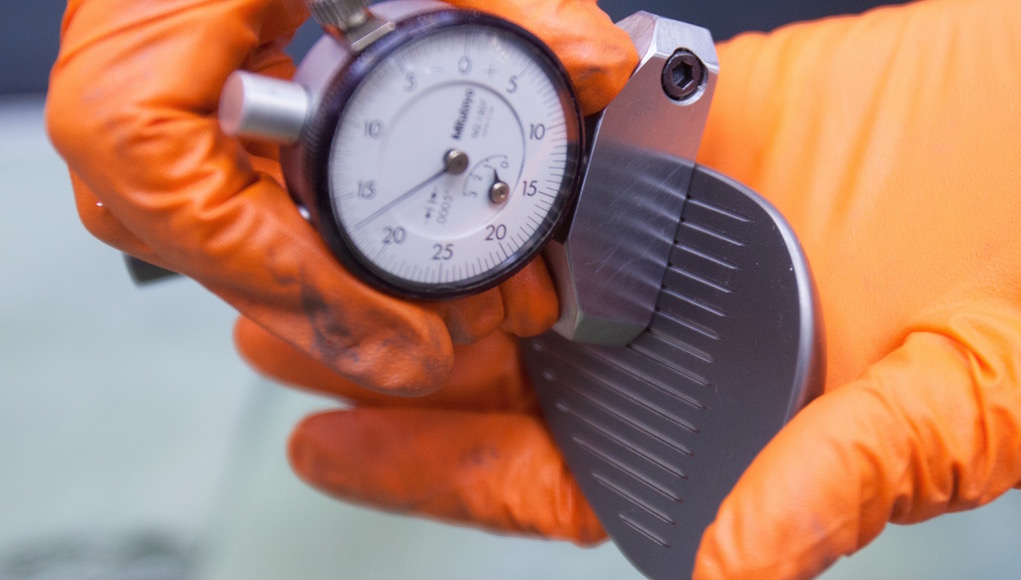
Ever wonder: What’s the difference between my wedges and the ones used on the PGA Tour? The DNA is identical, but the actual clubs on tour are normally unique to each player.
More than any other type of club, the modern wedge was borne of and by the best professional golfers in the world. Its place in design results from the demands and navigation of the most difficult competitions and courses. But the obvious question of whether “tour wedges” are necessary or even suitable for average golfers may help shed light on our clubs in everyday use.
Commercially available, or “stock” wedges, are sold as essentially the same tools that tour professionals use, however, professional golfers have customized their wedges forever. Tour heads are naturally heavier to allow for the extra shaping. Players grind them to their liking in terms of sole, head shape and leading edge shapes. Generally, measurements have less importance than how the club looks or how the wedge works with their game. Specifications get recorded after modifications have been made. Manufacturers use the tour prototypes to share with the public the same basic equipment as the best players in the world use, but often the modified “one-off” clubs aren’t exactly the same as the final products found on the shelves.
At the heart of the matter: THE BOUNCE, or the angle of the sole plane relative to the ground plane, has always been a source of disagreement and debate. It used to be a widely held belief that tour players used wedges with extremely low bounce values. The perception was that the better the player, the less bounce was required and vice versa. While that may have been true in a few limited cases, normally clubs with low bounce angles had wider soles. Another way of saying that is the distance from the leading edge to the trailing edge was longer.

A wider sole acts like it has more bounce, and it does when the player opens the face. The leading edge of the club lifts higher off the ground when the sole is wider, acting like extra bounce. Another wedge contour called “camber,” the roundness of the sole from the leading edge to the back of the sole, can substitute for additional bounce.
Whether genius or completely misguided, wedge manufacturers regularly published bounce values that were substantially different from the absolute values found on the clubs themselves. Even as recent as 1998, conventional wisdom regarding the amount of bounce used by PGA Tour players in so-called lob wedges was about 3 degrees. We now know that this was laughable. Better players are steeper… yes? So why would they use wedges with knife-like leading edges and soles? They wouldn’t with the exceptions of a few very rare cases. It turned out to be urban legend.
Typically, a very low bounce angle would incorporate a wider sole and more camber (roundness) to counter the effects of a flatter bounce angle. Wider soles act like added bounce, especially with an open face. These features are commonly found in so-called “game improvement” wedges for average golfers like Callaway’s Sure Out or the XE-1… you know, the one from the infomercial on Golf Channel.
Early on in my career at Cleveland Golf (I worked for Cleveland as The Senior Designer from 1998-2004 and consulted with them until 2009), we discovered that our documentation (brochures and other collateral materials) reflected inaccurate wedge bounce specifications. This was true of both consumer and “tour-only” products. Upon learning of these discrepancies, Cleveland Golf CEO Greg Hopkins (founder and owner of Hopkins Golf) dispatched me, a Cleveland consultant at the time, to travel the U.S. professional tours to measure and document all of the sole properties of every wedge in use in American professional golf. This was a gigantic undertaking involving more than 1,000 golf clubs. Over the course of several months, I traveled to PGA, LPGA, Champions and Web.com tours to measure wedges and document everything in a master database. We considered anything north of 45 degrees loft to be a wedge.
My Measurements
- Bounce Angle (in three places): Toe, heel and center.
- Sole Width (in three places): Toe, heel and center.
- Rocker Radius: The roundness from heel to toe.
- Camber Radius: The rounded contour from the leading edge to the back flange.
- Leading Edge Roll: The sharpness or dullness of the leading edge.
- Every Player Was Asked the Question: “Which loft is your primary sand club?”
Before this study, the task of creating tour wedges was something of a “black art.” It was iterative and often wasteful. We often had to custom fabricate many wedges for a player to get one in their hands. The results of the study might well have been one of the most revealing research projects in the history of the game. As a company, we were no longer guessing; we knew what wedges professional golfers needed and used, and it made our job a lot easier. We now had a primmer and a robust template to go by.
Through the study, we discovered the average loft progression for three-wedge sets was a six-degree spread: 47, 53 and 59 degrees. Almost no one played with a stock 56-degree sand wedge unless it was part of a four-wedge set, which was rare. The 56-degree wedges were normally bent to 54 degrees, and usually much of their flanges had been ground off usually to make them narrower (it should be noted that doing that actually INCREASES the measured bounce angle). The most common four-wedge loft progression was 46, 51, 54-55 and 59-60 degrees. We also saw many “pitching wedges” that were not matched to the iron sets. These didn’t look like 10 irons, but more like real wedges.
Finally, we learned that the vast majority of PGA Tour players had one wedge with higher relative bounce and one with lower relative bounce.
RELATIVE BOUNCE DEFINITION: If two wedges have identical sole properties (bounce angle, sole width, leading edge roll, camber radius and so on), the higher-lofted wedge will dig more and the lower-lofted wedge will act as though it has more bounce potential.
And most EXPLOSIVE of all, we learned that the average lob wedge (58-60 degrees) had 12 degrees of bounce angle. At the time it was stunning, to put it mildly. These high-bounce lob wedges were being used as the go-to primary sand clubs for the best players in the world. The so-called “sand wedge” (a 56-degree wedge with about 14 degrees of bounce) had become all but a dinosaur. The modern primary sand club has about 59 degrees of loft and 12 degrees of bounce.
The results of the research effort gave birth to several new concepts and a complete cultural change in Cleveland’s wedge programs. I like to believe that this was a paradigm for the entire industry at large, and we had contributed to the game.
- We rid wedges of letters SW, DW, PW, and LW in lieu of loft numbers.
- We conceived, developed and documented the concept of “net bounce,” a mathematical algorithm that predicted and derived sole specifications (bounce angle, sole width, camber and so on) for new wedge products at any loft. That is a part of the wedge development doctrine at Cleveland Golf to present day.
- We introduced the concept of multiple bounce options for any loft, known as the “Dot” system. Shortly afterwards, almost all other golf companies followed suit.
- Internally, we started to use the vernacular “primary sand club” with all of our fitting programs and wedge packages. And this was the way we communicated that to the tour as well.
We essentially changed the definition of what a sand wedge was. The subliminal connotation was that there were several sand clubs, not one dedicated to the purpose. Of course, we all now view sand play as achieved by using several different wedges. Within the context of the wedge business at the time, this was a very disruptive and pioneering set of actions, but we were only following the lead of what the tour was already doing.
Interestingly, wedges never really fit into the concept of the matched set. While the design of a wood or iron set with a “family-like” progression of features seems pretty straightforward, wedges don’t fit that mold no matter how similar the shape to its iron siblings. Average golfers mistakenly identify wedges as the shorter end of the iron set, basically the 10-13 irons. Well, IRONS they’re not! Wedges are in a class all by themselves. They are definitely not irons in the same way that hybrids are not fairway woods. As a matter of fact, modern wedges share more in common with putters than irons.
In the first place, wedges are used in a tactical way. Think of the difference of “tactical” versus “strategic.” A driver, fairway wood or long iron deliver more strategic results…in other words, long-range targeting to a larger area. Tactical means close in targeting to a smaller area.
Wedges facilitate delicate distance control because of their weight, high loft values, low centers of gravity and deep faces. Because of the large surface area of the faces, wedges offer a diversity of points which to strike the ball and get varying results. Furthermore, with the roundness of their leading edges and often their little offset — or even onset faces — wedges allow their faces to be opened substantially without the hosel getting in the way. Opening the face increases the loft for higher short range shots and increases the bounce potential of the wedge. Complex geometry of the sole lets the user orient the wedge with a diversity of setups. Large cuts on the toe or heal called “shelving” facilitate a more vertical or flatter setup by the golfer depending on the need.
Wedges have been likened to an artists’ paint brush or knights on a chess board. Similar to an artist’s paint brush, wedges are used differently than other clubs and produce shots differently every single time they are used. These are the tools of skillful golfing artisans. And like the adept use of the knights in chess, wedges deliver an obscure and invented type of shot, yet deadly results that confound the competition who has limited understanding of this part of the game.
Indeed the wedge game has become the modern signature of the very best players in the world. And if you think about it, it makes total sense. The modern wedge was developed with professional golf in mind.
- LIKE535
- LEGIT61
- WOW25
- LOL4
- IDHT2
- FLOP5
- OB0
- SHANK20
19th Hole
Vincenzi’s 2024 PGA Championship betting preview: Rising star ready to join the immortals at Valhalla

The second major of the 2024 season is upon us as the world’s best players will tee it up this week at Valhalla Golf Club in Louisville, Kentucky to compete for the Wanamaker Trophy.
The last time we saw Valhalla host a major championship, Rory McIlroy fended off Phil Mickelson, Henrik Stenson, Rickie Fowler and the creeping darkness that was descending upon the golf course. The Northern Irishman had the golf world in the palm of his hand, joining only Tiger Woods and Jack Nicklaus as players who’d won four major championships by the time they were 25 years old.
Valhalla is named after the great hall described in Norse mythology where the souls of Vikings feasted and celebrated with the Gods. The course is a Jack Nicklaus-design that has ranked among Golf Digest’s “America’s 100 Greatest Courses” for three decades.
Valhalla Golf Club is a par-71 measuring 7,542 yards with Zoysia fairways and Bentgrass greens. The course has rolling hills and dangerous streams scattered throughout and the signature 13th hole is picturesque with limestone and unique bunkering protecting the green. The 2024 PGA Championship will mark the fourth time Valhalla has hosted the event.
The field this week will consist of 156 players, including 16 PGA Champions and 33 Major Champions. All of the top players will be here gunning for the glory of a major championship with the exception of
Past Winners of the PGA Championship
- 2023: Brooks Koepka (-9) Oak Hill
- 2022: Justin Thomas (-5) Southern Hills
- 2021: Phil Mickelson (-6) Kiawah Island
- 2020: Collin Morikawa (-13) TPC Harding Park
- 2019: Brooks Koepka (-8) Bethpage Black
- 2018: Brooks Koepka (-16) Bellerive
- 2017: Justin Thomas (-8) Quail Hollow
- 2016: Jimmy Walker (-14) Baltusrol
- 2015: Jason Day (-20) Whistling Straits
- 2014: Rory McIlroy (-16) Valhalla
In this article and going forward, I’ll be using the Rabbit Hole by Betsperts Golf data engine to develop my custom model. If you want to build your own model or check out all of the detailed stats, you can sign up using promo code: MATTVIN for 25% off any subscription package (yearly is best value).
Key Stats For Valhalla
Let’s take a look at five key metrics for Oak Hill to determine which golfers boast top marks in each category over their past 24 rounds.
1. Strokes Gained: Approach
Valhalla will play as a true all-around test of golf for the world’s best. Of course, it will take strong approach play to win a major championship.
Strokes Gained: Approach Over Past 24 Rounds
- Shane Lowry (+1.25)
- Scottie Scheffler (+1.09)
- Jordan Smith (+1.05)
- Tom Hoge (+.96)
- Corey Conners (+.94)
2. Strokes Gained: Off the Tee
Valhalla will play long and the rough will be penal. Players who are incredibly short off the tee and/or have a hard time hitting fairways will be all but eliminated from contention this week at the PGA Championship.
Strokes Gained: Off the Tee Over Past 24 Rounds:
- Bryson DeChambeau (+1.47)
- Scottie Scheffler (+1.11)
- Keith Mitchell (+.90)
- Alejandro Tosti (+.89)
- Ludvig Aberg (+.82)
Strokes Gained: Total on Nickalus Designs
Valhalla is a classic Nicklaus Design. Players who play well at Nicklaus designs should have an advantage coming into this major championship.
Strokes Gained: Total on Nicklaus Designs over past 36 rounds:
- Jon Rahm (+2.56)
- Scottie Scheffler (+2.48)
- Patrick Cantlay (+2.35)
- Collin Morikawa (+1.79)
- Shane Lowry (+1.57)
Strokes Gained: Tee to Green on Very Long Courses
Valhalla is going to play extremely long this week. Players who have had success playing very long golf courses should be better equipped to handle the conditions of this major championship.
Strokes Gained: Total on Very Long Courses Over Past 24 Rounds:
- Scottie Scheffler (+2.44)
- Rory McIlroy (+2.24)
- Will Zalatoris (+1.78)
- Viktor Hovland (+1.69)
- Xander Schauffele (+1.60)
Strokes Gained: Total in Major Championships
One factor that tends to play a large role in deciding major championships is which players have played well in previous majors leading up to the event.
Strokes Gained: Total in Major Championships over past 20 rounds:
- Scottie Scheffler (+3.14)
- Will Zalatoris (+2.64)
- Rory McIlroy (+2.49)
- Xander Schauffele (+2.48)
- Tommy Fleetwood (2.09)
Strokes Gained: Putting on Bentgrass Greens
Valhalla features pure Bentgrass putting surfaces. Players who are comfortable putting on this surface will have an advantage on the greens.
Strokes Gained: Putting on Bentgrass Greens over Past 24 Rounds:
- Ludvig Aberg (+1.12)
- Denny McCarthy (+1.08)
- Matt Fitzpatrick (+0.99)
- Justin Rose (+0.93)
- J.T. Poston (0.87)
Strokes Gained: Total on Zoysia Fairways
Valhalla features Zoysia fairways. Players who are comfortable playing on this surface will have an advantage on the field.
Strokes Gained: Total on Zoysia Fairways over past 36 rounds:
- Justin Thomas (+1.53)
- Will Zalatoris (+1.47)
- Xander Schauffele (+1.40)
- Brooks Koepka (+1.35)
- Rory McIlroy (+1.23)
2024 PGA Championship Model Rankings
Below, I’ve compiled overall model rankings using a combination of the key statistical categories previously discussed — SG: Approach (25%), SG: Off the Tee (22%), SG: T2G on Very Long Courses (12%), SG: Putting on Bentgrass (+12%), SG: Total on Nicklaus Designs (12%). SG: Total on Zoysia Fairways (8%), and SG: Total in Major Championships (8%).
- Brooks Koepka
- Xander Schauffele
- Rory McIlroy
- Scottie Scheffler
- Bryson DeChambeau
- Shane Lowry
- Alex Noren
- Will Zalatoris
- Cameron Young
- Keith Mitchell
- Hideki Matsuyama
- Billy Horschel
- Patrick Cantlay
- Viktor Hovland
- Adam Schenk
- Chris Kirk
- Sahith Theegala
- Min Woo Lee
- Joaquin Niemann
- Justin Thomas
2024 PGA Championship Picks
Ludvig Aberg +1800 (BetMGM)
At The Masters, Ludvig Aberg announced to the golf world that he’s no longer an “up and coming” player. He’s one of the best players in the game of golf, regardless of experience.
Augusta National gave Aberg some necessary scar tissue and showed him what being in contention at a major championship felt like down the stretch. Unsurprisingly, he made a costly mistake, hitting it in the water left of the 11th hole, but showed his resilience by immediately bouncing back. He went on to birdie two of his next three holes and finished in solo second by three shots. With the type of demeanor that remains cool in pressure situations, I believe Ludvig has the right mental game to win a major at this point in his career.
Aberg has not finished outside of the top-25 in his past eight starts, which includes two runner-up finishes at both a “Signature Event” and a major championship. The 24-year-old is absolutely dominant with his driver, which will give him a major advantage this week. In the field he ranks, in Strokes Gained: Off the Tee, and has gained strokes in the category in each of his past ten starts. Aberg is already one of the best drivers of the golf ball on the planet.
In Norse mythology, Valhalla is the great hall where the souls of Vikings feasted and celebrated with the Gods. The Swedes, who are of Old Norse origin, were the last of the three Scandinavian Kingdoms to abandon the Old Norse Gods. A Swede played a major role in the 2014 PGA Championship at Valhalla, and I believe another, Ludvig Aberg, will be the one to conquer Valhalla in 2024.
Bryson DeChambeau +2800 (BetMGM)
Bryson DeChambeau is one of the few players in the world that I believe has the game to go blow-for-blow with Scottie Scheffler. Although he isn’t as consistent as Scheffler, when he’s at his best, Bryson has the talent to beat him.
At The Masters, DeChambeau put forth a valiant effort at a golf course that simply does not suit his game. Valhalla, on the other hand, is a course that should be perfect for the 30-year-old. His ability to overpower a golf course with his driver will be a serious weapon this week.
Bryson has had some success at Jack Nicklaus designs throughout his career as he won the Memorial at Muirfield Village back in 2018. He’s also had incredible results on Bentgrass greens for the entirety of his professional career. Of his 10 wins, nine of them have come on Bentgrass greens, with the only exception being the Arnold Palmer Invitational at Bay Hill. He also has second place finishes at Medinah and TPC Summerlin, which feature Bentgrass greens.
Love him or hate him, it’s impossible to argue that Bryson isn’t one of the most exciting and important players in the game of golf. He’s also one of the best players in the world. A second major is coming soon for DeChambeau, and I believe he should be amongst the favorites to hoist the Wanamaker Trophy this week.
Patrick Cantlay +4000 (FanDuel)
There’s no way of getting around it: Patrick Cantlay has been dissapointing in major championships throughout his professional career. He’s been one of the top players on Tour for a handful of years and has yet to truly contend at a major championship, with the arguable exception of the 2019 Masters.
Despite not winning majors, Cantlay has won some big events. The 32-year-old has won two BMW Championships, two Memorial Tournaments as well as a Tour Championship. His victories at Memorial indicate how much Cantlay loves Nicklaus designs, where he ranks 3rd in the field in Strokes Gained: Total over his past 36 rounds behind only Scottie Scheffler and Jon Rahm.
Cantlay also loves Bentgrass greens. Six of Cantlay’s seven individual wins on the PGA Tour have come on Bentgrass greens and he also was one of the best putters at the 2023 Ryder cup at Marco Simone (also Bentgrass). At Caves Valley (2021 BMW Championship), he gained over 12 strokes putting to outduel another Bentgrass specialist, Bryson DeChambeau.
Cantlay finished 22nd in The Masters, which was a solid result considering how many elite players struggled that week. He also has two top-ten finishes in his past five PGA Championships. He’s undeniably one of the best players in the field, therefore, it comes down to believing Cantlay has the mental fortitude to win a major, which I do.
Joaquin Niemann +4000 (BetMGM)
I believe Joaquin Niemann is one of the best players in the world. He has three worldwide wins since December and has continued to improve over the course of his impressive career thus far. Still only 25, the Chilean has all the tools to be a serious contender in major championships for years to come.
Niemann has been the best player on LIV this season. Plenty will argue with the format or source of the money on LIV, but no one can argue that beating players such as Jon Rahm, Bryson DeChambeau, Dustin Johnson, Brooks Koepka and Cameron Smith is an unremarkable achievement. Niemann is an elite driver of the golf ball who hits it farther than just about anyone in the field not named Bryson DeChambeau or (arguably) Rory McIlroy.
Niemann is another player who has been fantastic throughout his career on Bentgrass greens. Prior to leaving the PGA Tour, Bentgrass was the only green surface in which Joaco was a positive putter. It’s clearly a surface that he is very comfortable putting on and should fare around and on the greens this week.
Niemann is a perfect fit for Valhalla. His low and penetrating ball flight will get him plenty of runout this week on the fairways and he should have shorter shots into the green complexes than his competitors. To this point in his career, the former top ranked amateur in the world (2018) has been underwhelming in major championships, but I don’t believe that will last much longer. Joaquin Niemann is a major championship caliber player and has a real chance to contend this week at Valhalla.
- LIKE12
- LEGIT5
- WOW1
- LOL0
- IDHT0
- FLOP2
- OB0
- SHANK4
Opinion & Analysis
The Wedge Guy: What really makes a wedge work? Part 2

In my last post, I explained the basic performance dynamics of “smash factor” and “gear effect” as they apply to your wedges and your wedge play success. If you missed that post, you can read it here.
At the end of that post, I promised “part 2” of this discussion of what makes a wedge work the way it does. So, let’s dive into the other two components of any wedge – the shaft and the grip.
It’s long been said that the shaft is “the engine of the golf club.” The shaft (and grip) are your only connection to all the technologies that are packed into the head of any golf club, whether it be a driver, fairway, hybrid, iron, wedge or even putter.
And you cannot ignore those two components of your wedges if your goal is optimizing your performance.
I’ve long been an advocate of what I call a “seamless transition” from your irons into your wedges, so that the feel and performance do not disconnect when you choose a gap wedge, for example, instead of your iron-set-matching “P-club.” In today’s golf equipment marketplace, more and more golfers are making the investment of time and money to experience an iron fitting, going through trial and error and launch monitor measuring to get just the right shaft in their irons.
But then so many of those same golfers just go into a store and choose wedges off the retail display, with no similar science involved at all. And that’s why I see so many golfers with a huge disconnect between their custom-fitted irons, often with lighter and/or softer graphite or light steel shafts . . . and their off-the-rack wedges with the stock stiff steel ‘wedge flex’ shaft common to those stock offerings.
If your wedge shafts are significantly heavier and stiffer than the shafts in your irons, it is physically impossible for you to make the same swing. Period.
To quickly improve your wedge play, one of the first things you can do is have your wedges re-shafted with the same or similar shaft that is in your irons.
There’s another side of that shaft weight equation; if you don’t have the forearm and hand strength of a PGA Tour professional, you simply cannot “handle” the same weight shaft that those guys play to master the myriad of ‘touch shots’ around the greens.
Now, let’s move on to the third and other key component of your wedges – the grips. If those are not similar in shape and feel to the grips on your irons, you have another disconnect. Have your grips checked by a qualified golf club professionals to make sure you are in sync there.
The one caveat to that advice is that I am a proponent of a reduced taper in your wedge grips – putting two to four more layers of tape under the lower hand, or selecting one of the many reduced taper grips on the market. That accomplishes two goals for your scoring.
First, it helps reduce overactive hands in your full and near-full wedge swings. Quiet hands are key to good wedge shots.
And secondly, it provides a more consistent feel of the wedge in your hands as you grip down for those shorter and more delicate shots around the greens. And you should always grip down as you get into those touch shots. I call it “getting closer to your work.”
So, if you will spend as much time selecting the shafts and grips for your wedges as you do choosing the brand, model, and loft of them, your scoring range performance will get better.
More from the Wedge Guy
- The Wedge Guy: What really makes a wedge work? Part 1
- The Wedge Guy: The easiest-to-learn golf basic
- The Wedge Guy: Golf mastery begins with your wedge game
- LIKE6
- LEGIT3
- WOW0
- LOL1
- IDHT1
- FLOP0
- OB0
- SHANK5
19th Hole
Vincenzi’s 2024 Wells Fargo Championship betting preview: Tommy Fleetwood ready to finally land maiden PGA Tour title

The PGA Tour season ramps back up this week for another “signature event,” as golf fans look forward to the year’s second major championship next week.
After two weaker-field events in the Zurich Classic and the CJ Cup Byron Nelson, most of the best players in the world will head to historic Quail Hollow for one of the best non-major tournaments of the year.
Last season, Wyndham Clark won the event by four shots.
Quail Hollow is a par-71 measuring 7,521 yards that features Bermudagrass greens. The tree-lined, parkland style course can play quite difficult and features one of the most difficult three-hole stretches in golf known as “The Green Mile,” which makes up holes 16-18: two mammoth par 4s and a 221-yard par 3. All three holes have an average score over par, and water is in play in each of the last five holes on the course.
The field is excellent this week with 68 golfers teeing it up without a cut. All of the golfers who’ve qualified are set to tee it up, with the exception of Scottie Scheffler, who is expecting the birth of his first child.
Past Winners at Quail Hollow
- 2023: Wyndham Clark (-19)
- 2022: Max Homa (-8)
- 2021: Rory McIlroy (-10)
- 2019: Max Homa (-15)
- 2018: Jason Day (-12)
- 2017: Justin Thomas (-8) (PGA Championship)
- 2016: James Hahn (-9)
- 2015: Rory McIlroy (-21)
Key Stats For Quail Hollow
Strokes Gained: Approach
Strokes gained: Approach will be extremely important this week as second shots at Quail Hollow can be very difficult.
Total SG: Approach Over Past 24 Rounds
- Akshay Bhatia (+1.16)
- Tom Hoge (+1.12)
- Corey Conners (+1.01)
- Shane Lowry (+0.93)
- Austin Eckroat (+0.82)
Strokes Gained: Off the Tee
Quail Hollow is a long course on which it is important to play from the fairway. Both distance and accuracy are important, as shorter tee shots will result in approach shots from 200 or more yards. With most of the holes heavily tree lined, errant drives will create some real trouble for the players.
Strokes Gained: Off the Tee Past 24 Rounds:
- Ludvig Aberg (+0.73)
- Rory McIlroy (+0.69)
- Xander Schauffele (+0.62)
- Viktor Hovland (+0.58)
- Chris Kirk (+0.52)
Proximity: 175-200
The 175-200 range is key at Quail Hollow. Players who can hit their long irons well will rise to the top of the leaderboard.
Proximity: 175-200+ over past 24 rounds:
- Cameron Young (28’2″)
- Akshay Bhatia (29’6″)
- Ludvig Aberg (+30’6″)
- Sam Burns (+30’6″)
- Collin Morikawa (+30’9″)
SG: Total on Tom Fazio Designs
Players who thrive on Tom Fazio designs get a bump for me at Quail Hollow this week.
SG: Total on Tom Fazio Designs over past 36 rounds:
- Patrick Cantlay (+2.10)
- Rory McIlroy (+1.95)
- Tommy Fleetwood (+1.68)
- Austin Eckroat (+1.60)
- Will Zalatoris (+1.57)
Strokes Gained: Putting (Bermudagrass)
Strokes Gained: Putting has historically graded out as the most important statistic at Quail Hollow. While it isn’t always predictable, I do want to have it in the model to bump up golfers who prefer to putt on Bermudagrass.
Strokes Gained: Putting (Bermudagrass) Over Past 24 Rounds:
- Taylor Moore (+0.82)
- Nick Dunlap (+.76)
- Wyndham Clark (+.69)
- Emiliano Grillo (+.64)
- Cam Davis (+.61)
Course History
This stat will incorporate players that have played well in the past at Quail Hollow.
Course History over past 36 rounds (per round):
- Rory McIlroy (+2.50)
- Justin Thomas (+1.96)
- Jason Day (+1.92)
- Rickie Fowler (+1.83)
- Viktor Hovland (+1.78)
Wells Fargo Championship Model Rankings
Below, I’ve compiled overall model rankings using a combination of the five key statistical categories previously discussed — SG: Approach (27%), SG: Off the Tee (23%), SG: Total on Fazio designs (12%), Proximity: 175-200 (12%), SG: Putting Bermuda grass (12%), and Course History (14%).
- Wyndham Clark
- Rory McIlroy
- Xander Schauffele
- Shane Lowry
- Hideki Matsuyama
- Viktor Hovland
- Cameron Young
- Austin Eckroat
- Byeong Hun An
- Justin Thomas
2024 Wells Fargo Championship Picks
Tommy Fleetwood +2500 (DraftKings)
I know many out there have Tommy fatigue when it comes to betting, which is completely understandable given his lack of ability to win on the PGA Tour thus far in his career. However, history has shown us that players with Fleetwood’s talent eventually break though, and I believe for Tommy, it’s just a matter of time.
Fleetwood has been excellent on Tom Fazio designs. Over his past 36 rounds, he ranks 3rd in the field in Strokes Gained: Total on Fazio tracks. He’s also been incredibly reliable off the tee this season. He’s gained strokes in the category in eight of his past nine starts, including at The Masters, the PLAYERS and the three “signature events” of the season. Tommy is a golfer built for tougher courses and can grind it out in difficult conditions.
Last year, Fleetwood was the first-round leader at this event, firing a Thursday 65. He finished the event in a tie for 5th place.
For those worried about Fleetwood’s disappointing start his last time out at Harbour Town, he’s bounced back nicely after plenty of poor outings this season. His T7 at the Valero Texas Open was after a MC and T35 in his prior two starts and his win at the Dubai Invitational came after a T47 at the Sentry.
I expect Tommy to bounce back this week and contend at Quail Hollow.
Justin Thomas +3000 (DraftKings)
It’s been a rough couple of years for Justin Thomas, but I don’t believe things are quite as bad as they seem for JT. He got caught in the bad side of the draw at Augusta for last month’s Masters and has gained strokes on approach in seven of his nine starts in 2024.
Thomas may have found something in his most recent start at the RBC Heritage. He finished T5 at a course that he isn’t the best fit for on paper. He also finally got the putter working and ranked 15th in Strokes Gained: Putting for the week.
The two-time PGA champion captured the first of his two major championships at Quail Hollow back in 2017, and some good vibes from the course may be enough to get JT out of his slump.
Thomas hasn’t won an event in just about two years. However, I still believe that will change soon as he’s been one of the most prolific winners throughout his PGA Tour career. Since 2015, he has 15 PGA Tour wins.
Course history is pretty sticky at Quail Hollow, with players who like the course playing well there on a regular basis. In addition to JT’s PGA Championship win in 2017, he went 4-1 at the 2022 Presidents Cup and finished T14 at the event last year despite being in poor form. Thomas can return as one of the top players on the PGA Tour with a win at a “signature event” this week.
Cameron Young +3500 (DraftKings)
For many golf bettors, it’s been frustrating backing Cam Young this season. His talent is undeniable, and one of the best and most consistent performers on the PGA Tour. He just hasn’t broken through with a victory yet. Quail Hollow has been a great place for elite players to get their first victory. Rory McIlroy, Anthony Kim, Rickie Fowler and Wyndham Clark all notched their first PGA Tour win at Quail.
Throughout Cam Young’s career, he has thrived at tougher courses with strong fields. This season, he finished T16 at Riviera and T9 at Augusta National, demonstrating his preference of a tough test. His ability to hit the ball long and straight off the tee make him an ideal fit for Quail Hollow, despite playing pretty poorly his first time out in 2023 (T59). Young should be comfortable playing in the region as he played his college golf at Wake Forest, which is about an hour’s drive from Quail Hollow.
The 26-year-old has played well at Tom Fazio designs in the past and ranks 8th in the field in Strokes Gained: Total on those courses in his last 36 rounds. Perhaps most importantly, this season, Young is the best player on the PGA Tour in terms of proximity from 175-200 in the fairway, which is where a plurality and many crucial shots will come from this week.
Young is an elite talent and Quail Hollow has been kind to players of his ilk who’ve yet to win on Tour.
Byeong Hun An +5000 (FanDuel)
Byeong Hun An missed some opportunities last weekend at the CJ Cup Byron Nelson. He finished T4 and played some outstanding golf, but a couple of missed short putts prevented him from getting to the winning score of -23. Despite not getting the win, it’s hard to view An’s performance as anything other than an overwhelming success. It was An’s fourth top-ten finish of the season.
Last week, An gained 6.5 strokes ball striking, which was 7th in the field. He also ranked 12th for Strokes Gained: Approach and 13th for Strokes Gained: Off the Tee. The South Korean has been hitting the ball so well from tee to green all season long and he now heads to a golf course that should reward his precision.
An’s driver and long irons are absolute weapons. At Quail Hollow, players will see plenty of approach shots from the 175-200 range as well as some from 200+. In his past 24 rounds, Ben ranks 3rd in the field in proximity from 175-200 and 12th in proximity from 200+. Playing in an event that will not end up being a “birdie” fest should help An, who can separate from the field with his strong tee to green play. The putter may not always cooperate but getting to -15 is much easier than getting to -23 for elite ball strikers who tend to struggle on the greens.
Winning a “signature event” feels like a tall task for An this week with so many elite players in the field. However, he’s finished T16 at the Genesis Invitational, T16 at The Masters and T8 at the Arnold Palmer Invitational. The 32-year-old’s game has improved drastically this season and I believe he’s ready to get the biggest win of his career.
- LIKE9
- LEGIT4
- WOW1
- LOL1
- IDHT1
- FLOP1
- OB0
- SHANK1
-

 19th Hole2 weeks ago
19th Hole2 weeks agoLET pro gives detailed financial breakdown of first week on tour…and the net result may shock you
-

 19th Hole6 days ago
19th Hole6 days agoReport: LIV star turns down PGA Championship invite due to ‘personal commitments’
-

 19th Hole2 weeks ago
19th Hole2 weeks agoGary Player claims this is what ‘completely ruined’ Tiger Woods’ career
-

 Equipment5 days ago
Equipment5 days agoDetails on Justin Thomas’ driver switch at the Wells Fargo Championship
-

 Whats in the Bag2 weeks ago
Whats in the Bag2 weeks agoTeam McIlowry (Rory McIlroy, Shane Lowry) winning WITBs: 2024 Zurich Classic
-

 Whats in the Bag6 days ago
Whats in the Bag6 days agoKeegan Bradley WITB 2024 (May)
-

 Equipment2 weeks ago
Equipment2 weeks agoGolf fans left surprised by LIV’s choice of course for its 2024 individual championship event
-
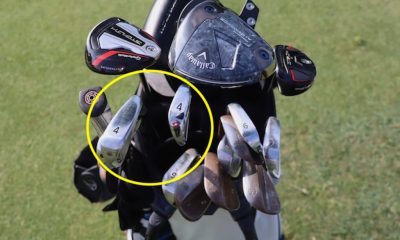
 Equipment2 weeks ago
Equipment2 weeks agoWhy Wesley Bryan is playing two 4-irons this week



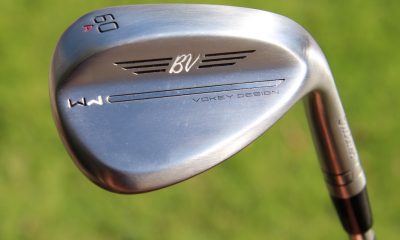

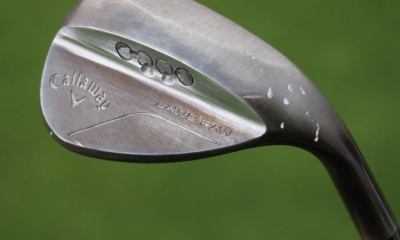

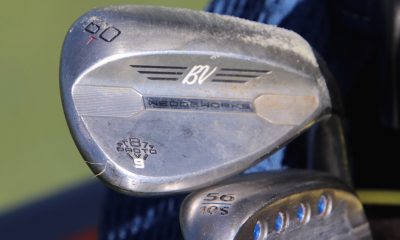

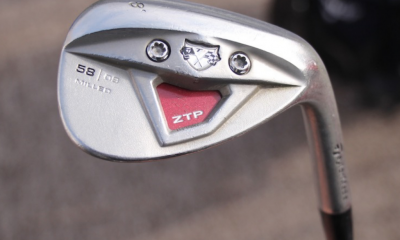

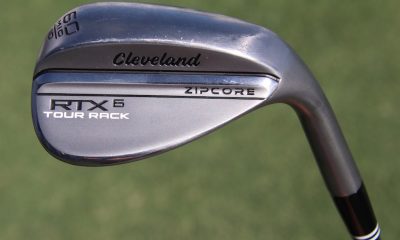

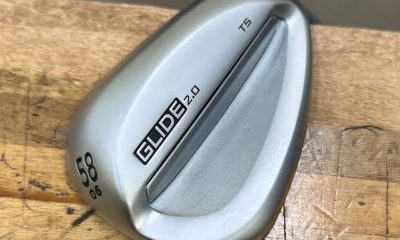













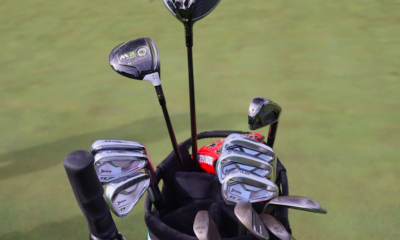





Tony Wright
Jul 11, 2017 at 12:29 pm
Don an absolutely great article thank you. Unless I missed it, I do not see any discussion about the shafts used in tour wedges. Do tour players use the same shafts in their wedges as they use in their irons? If not why not, and what are the trends? Would love to hear your thoughts on this thanks.
Don Wood
Jul 12, 2017 at 4:06 pm
Thank you Tony!
As a general rule, shafts in tour wedges typically get a little softer. Wedge shafts can be basically “8 iron” shafts. But because the wedges have heavier head weights, the flex is softer. That’s not true for all as some tour players want their wedges to be the stiffest ones in the bag. And the wedges are almost always steel…even if the player has mostly graphite throughout the bag.
Golf Code Weekly
Jun 20, 2017 at 9:24 am
What a great article!
That was the most educational thing i have read in a long time, really interesting to learn about this stuff from someone who clearly knows a lot
thanks!
Bill
Jun 19, 2017 at 3:27 pm
Please ignore trolls ooffa and SH. The discussion is informative.
Don Wood
Jun 19, 2017 at 11:11 pm
Thanks Bill,
Trolls are a very important part of our society these days. Their numbers…or lack of them tell a lot about the vulnerability of what we say. Golf Trolls Are people too. And if they cannot contribute to our game, they at least have the desire to be a part of the discussion. Let’s give em a break.
ooffa
Jun 21, 2017 at 8:52 pm
I’m sorry I didn’t mean “often incorrect”.
I meant to say always.
tazz2293
Jun 18, 2017 at 8:32 pm
Thanks for the article Don.
Very informative and a great lesson.
ooffa
Jun 18, 2017 at 6:14 pm
ZZZZZZZzzzzzzz
Hack
Jun 18, 2017 at 2:51 am
1. Trial and error. You’re gonna have to own several lofts and bounces and rotate them according to what you’re going to encounter that day.
2. 1968? Well they had, basically, rubber balls back then. Rubber could grip the surface, if the surface is sticky-clean enough, and won’t need too many grooves to get spin. Think in terms of Table-Tennis. Flat surface of rubber against plastic balls – the balls spin plenty from the friction (given that the balls are, yes, very light, but still the principle is the same). Modern balls are hard, even with urethane, and need grooves to spin them. But then again, that is why we got rid of square grooves, as those were grabbing the ball and spinning them too much
Don Wood
Jun 17, 2017 at 8:51 pm
Hello Bubba,
Thank you for your question.
I had driving range access and knew many of the players and player reps.
Most of the time the players were pretty accommodating and didn’t mind a few measurements. All but a small handful had no objections. The other manufacturers really didn’t get the full understanding of what we were doing as it may have gone unreported by their player reps.
Net bounce became important because a nominal bounce angle measurement wasn’t a reliable indicator of how the sole would behave without knowing its other properties. Also, a single measurement in the center isn’t indicative of the behavior of the sole on various types of shots.
I’m not at all surprised at the bounce readings of your wedge.
bounce
Jun 17, 2017 at 1:44 pm
Don, I don’t understand how grinding off the flange increases bounce angle? Wouldn’t the bounce angle stay the same, unless part of the high point of the camber was ground down? Can you help me understand that. thanks.
“The 56-degree wedges were normally bent to 54 degrees, and usually much of their flanges had been ground off usually to make them narrower (it should be noted that doing that actually INCREASES the measured bounce angle).”
Don Wood
Jun 17, 2017 at 8:56 pm
Thank you for your question.
The answer has to do with the camber or the roundness from leading edge to back of the flange edge.
Bounce angle is measured from a tangent at the center of the sole equidistant to the edges of the leading and trailing edges. And so if one of these edges is moved towards the center as a result of grinding, the tangential center point migrates to the opposite side…along the arc of the camber.
bounce
Jun 17, 2017 at 10:30 pm
Ok that explains it. But if you measure it that way, how is knowing that # useful to anyone? You can have exact same wedges, both high points in camber intact, but 1 has relief on the trail edge. The one with relief is still playing the same way as the stock, as long as the high point in camber is still in tact after the grind. It plays the same way on everything except when the face gets wide open. Why call it “low bounce” just because sole length got shorter? It doesn’t tell the whole story.
Don Wood
Jun 18, 2017 at 11:18 am
Actually, the entire surface area of the sole has a dramatic effect on the “bounce potential” of the wedge at nearly any face orientation in the circumstances of thick contact. So if we grind the back flange to narrow the sole, that quantity is reduced. While a perfectly solid shot hit with a square face may not be affected, once we travel outside of those pristine strike conditions, we need to disperse the friction over a larger area.
bounce
Jun 19, 2017 at 2:17 am
don, anyone seriously putting relief on the trail edge is doing it to get the leading edge lower on open face partial shots.
They could careless how it performs when you take a 10 inch divot, because this player simply doesn’t do that.
Am I wrong?
Rex
Jun 17, 2017 at 1:32 pm
Where’s the part about wedges?
Desmond
Jun 17, 2017 at 1:13 pm
Appreciate the history lesson.